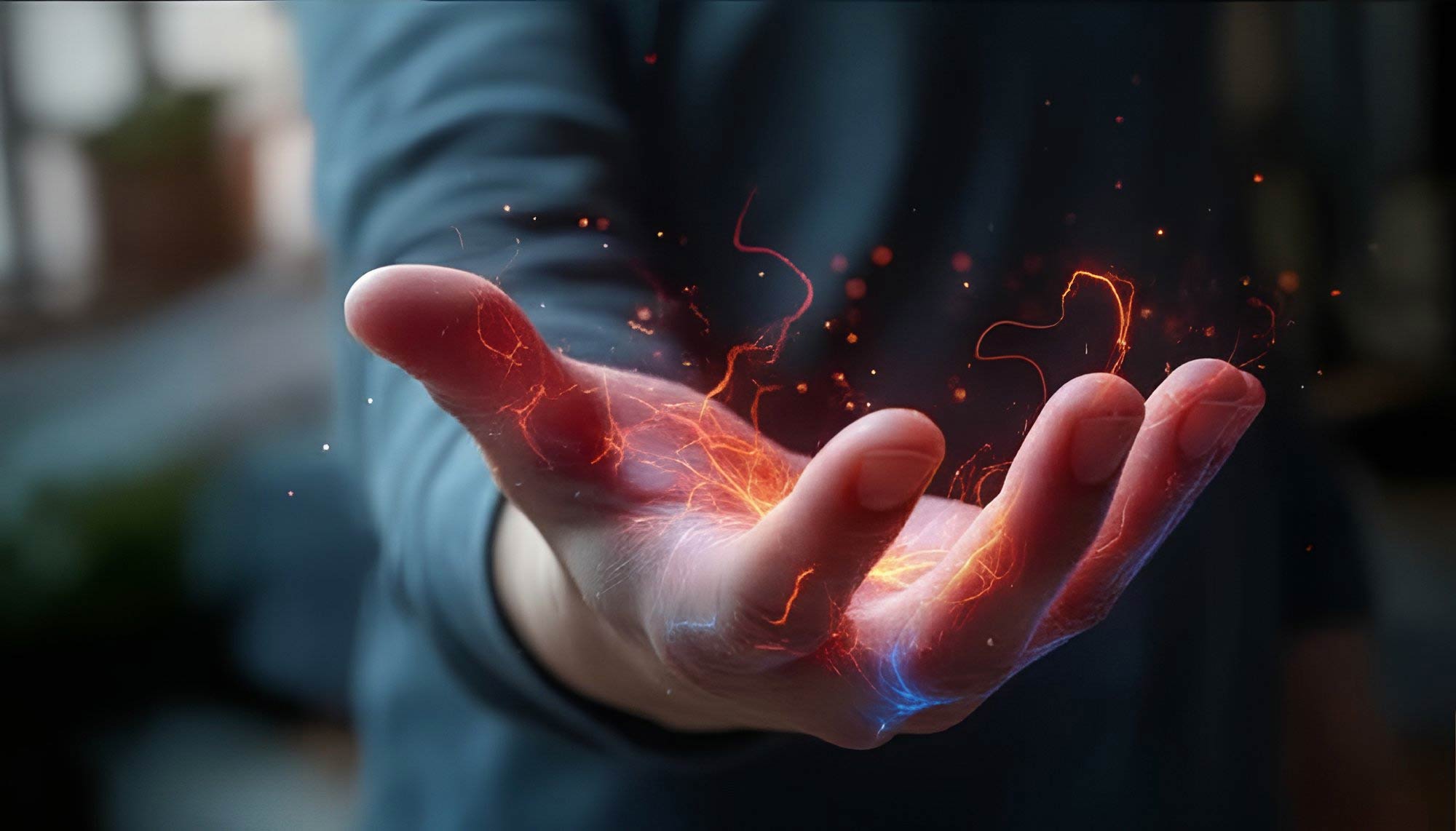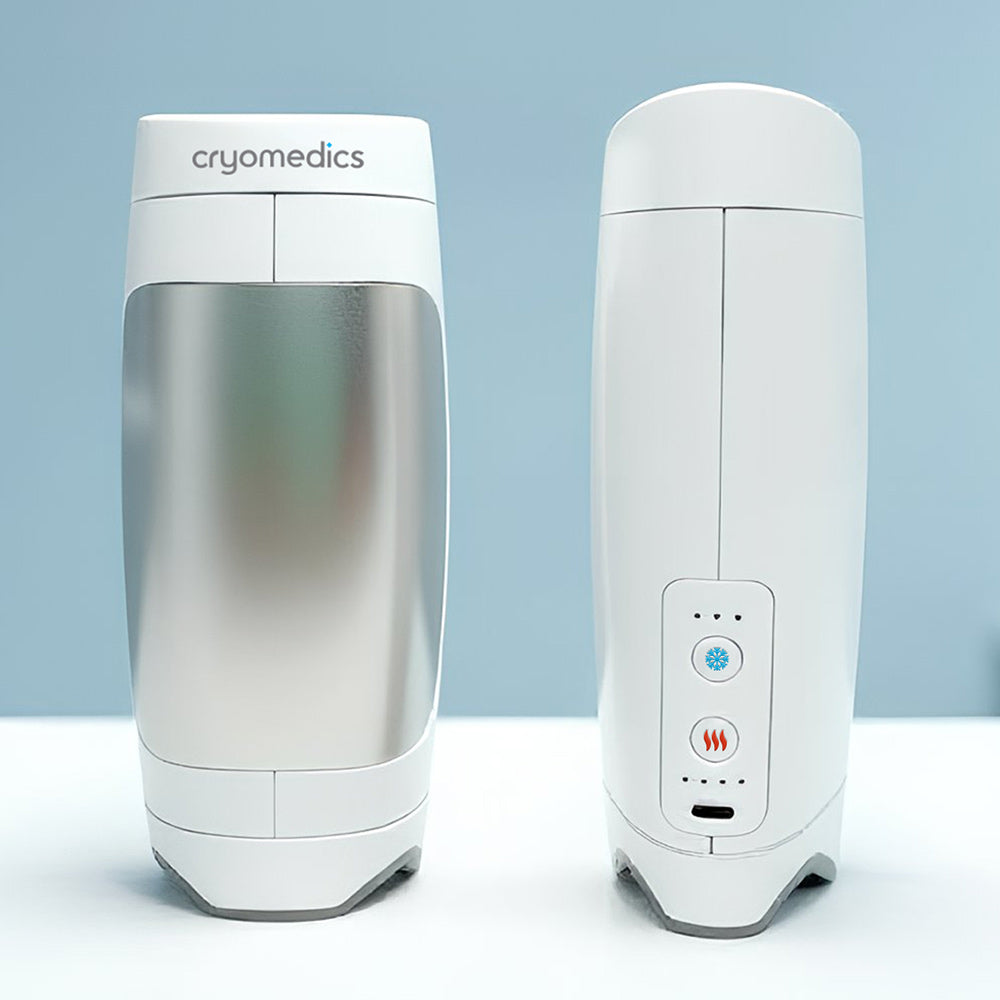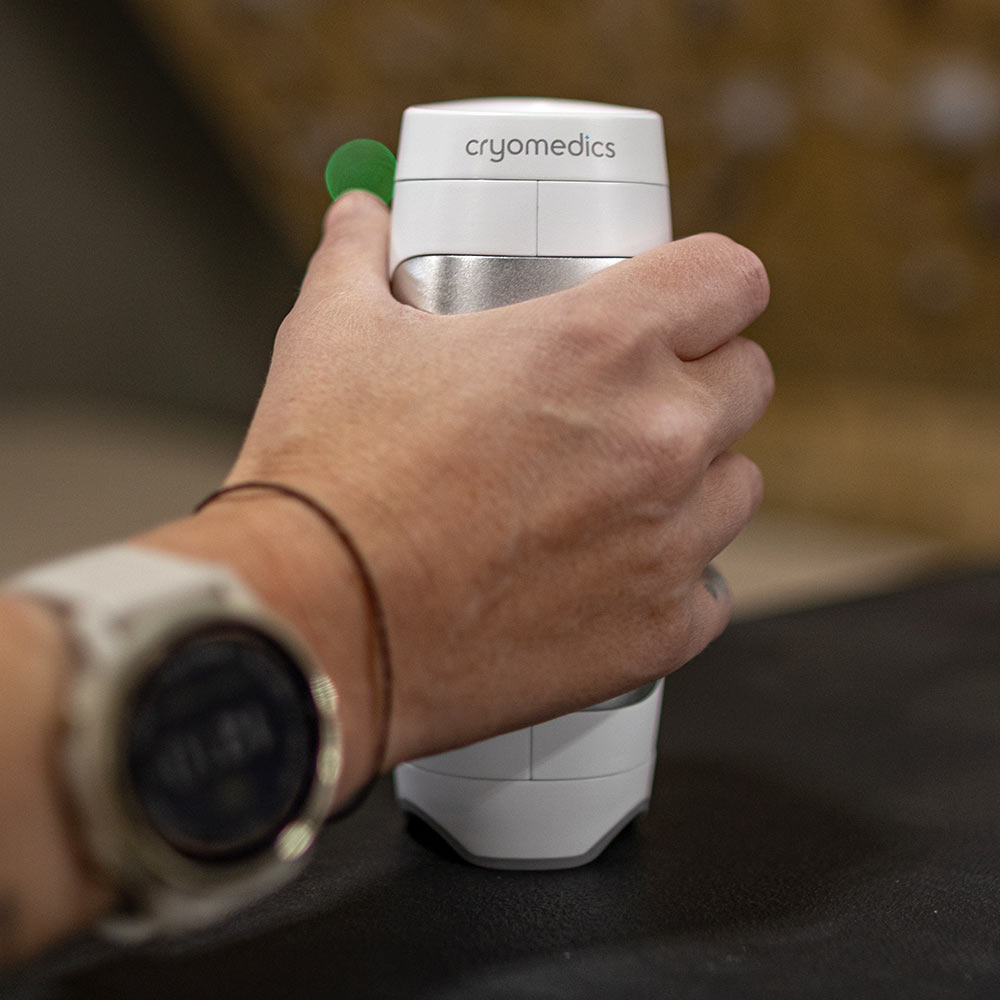Based on 20+ years of Stanford thermoregulation research by Dr. Heller and Dr. Grahn.
TL;DR
Palm and vagus nerve cooling represent two of the most effective, non-invasive ways to regulate the body’s temperature and nervous system. Backed by Stanford research, these methods unlock faster recovery, higher endurance, and improved thermal control.

Athletic performance:
Stanford studies show palm cooling can increase endurance by ~15% and strength training work volume by up to 144%.

Menopause relief:
Clinical trials show that effectively lowering core body temperature can reduce the intensity and duration of menopausal hot flashes. Cryo-1's warming mode also provides quick comfort for sudden hormonal chills, helping restore circulation and balance.
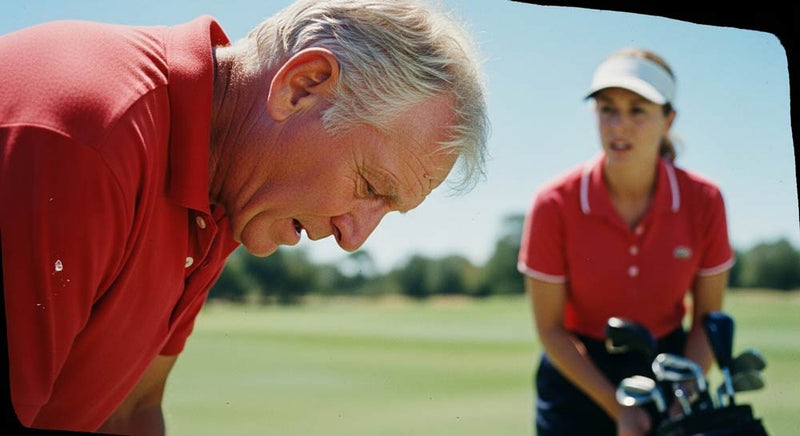
Outdoor heat stress:
Golfers, firefighters, soldiers, and outdoor workers can use palm cooling recover faster, lower heart rates, and return to work more safely.
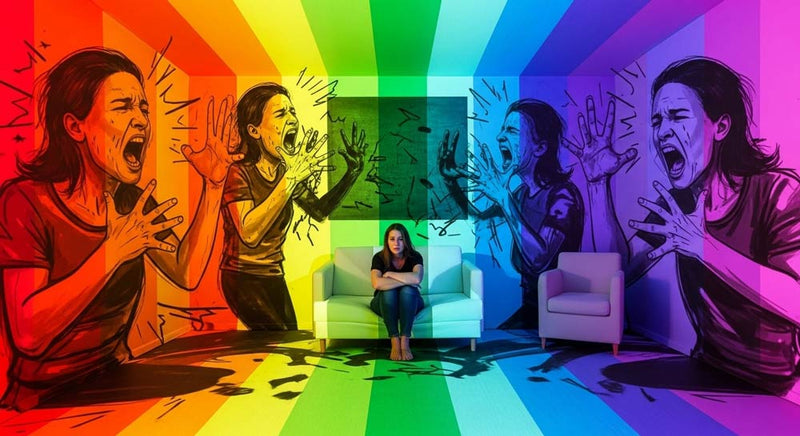
Anxiety & vagus nerve cooling:
Cooling palms and lateral neck areas can lower heart rate, activating the parasympathetic nervous system, and reduce panic symptoms.
Palm Cooling Origins
A History of Discovery and Effectiveness
Palm cooling wasn’t born in sports science — it was discovered in medicine. Surgeons learned during open-heart procedures that patients who couldn’t be covered could be rewarmed by heating their palms and soles, revealing unique heat exchange pathways.
Later research confirmed that these glabrous skin areas work as natural radiators, capable of rapidly moving heat in or out of the body. This insight became the foundation of palm cooling for performance and safety. Comparing it with neck cooling shows why palm cooling is more than comfort — it’s physiology.

Medical Origins in Surgery
Doctors found that warming the palms and soles helped patients recover faster from open-heart surgery when their torsos were exposed.
This was the first evidence that these skin regions were gateways for managing core body temperature.

The Shift to Cooling
Once the mechanism was known, scientists tested the reverse: cooling the palms.
They found it lowered core temperature more effectively than surface methods like towels or fans, slowing fatigue and strain during exercise in the heat.
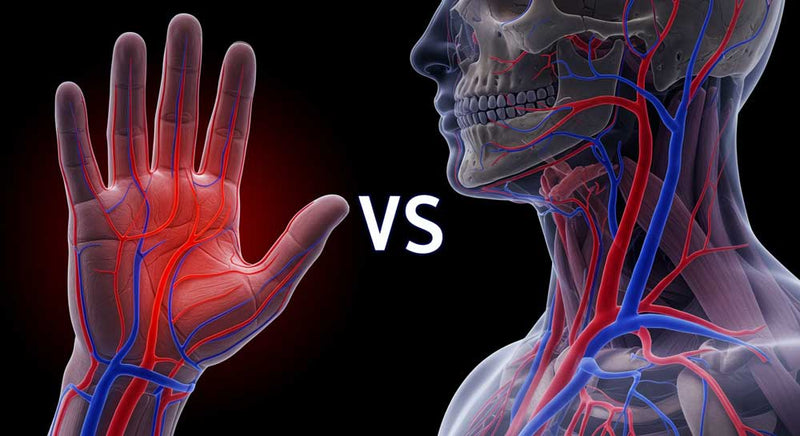
Neck Cooling vs. Palm Cooling
Studies show that neck cooling mostly improves comfort, reducing perceived exertion but rarely changing heart rate, lactate levels, or core temperature.
Palm cooling, by contrast, directly reduces physiological strain, measurably improving endurance and recovery.

Real-World Application
Palm cooling has since been tested in athletes, firefighters, and workers.
It consistently lowers heart rate, improves work volume, and accelerates recovery — proving that what started as a surgical trick is now a practical tool for performance and safety.
Background
Extensive clinical trials at institutions such as Standford University have shown dramatic positive effects of palm cooling.
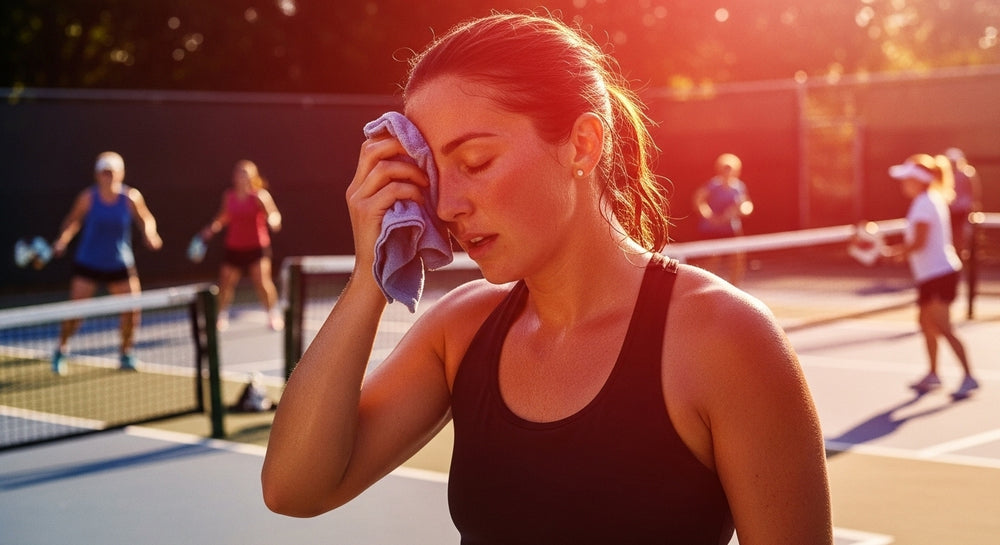
How the Body Regulates Heat
Every human body runs on a precise internal thermostat controlled by the hypothalamus. When metabolic activity raises core temperature, the body relies on arteriovenous anastomoses (AVAs)—dense clusters of blood vessels in the palms, soles, and face—to release excess heat.
These AVAs act as high-flow “radiators.” When open, warm blood from the body’s core flows close to the skin’s surface, allowing rapid heat exchange with the environment. When constricted, they conserve warmth.
However, during intense activity or hot environments, the body’s natural cooling systems can’t keep up. Core temperature rises, muscle enzymes slow, and fatigue sets in. At just a 1 °C increase, endurance and coordination begin to decline measurably. Targeting these AVA-rich areas allows the body to offload heat far more efficiently than cooling the skin surface alone.
Palm cooling leverages this principle: by applying controlled, conductive cooling to the palms, the blood that returns to the heart is cooler, which in turn lowers overall body temperature quickly and safely.

Palm Cooling & the Physiology of Performance
Stanford University researchers Dr. H. Craig Heller and Dr. Dennis Grahn discovered that cooling the palms within an optimal range—12–16 °C (54–61 °F)—prevents heat-induced fatigue and dramatically improves performance.
In controlled studies:
- Athletes increased endurance by up to 46 % in aerobic exercise.
- Strength-training work volume rose by 40–144 % when palms were cooled between sets.
- Participants reported faster heart-rate recovery and reduced perceived exertion.
At a cellular level, palm cooling stabilizes ATP production, the fuel for muscular contraction. By keeping muscle temperature in an optimal range, it delays enzyme breakdown and allows for longer, stronger effort. The result is faster recovery and greater output—without over-heating or over-training.
Athletic Performance
Real Results & Data
Athletic performance is often limited not by muscle or willpower, but by the body’s rising core temperature. As heat builds, fatigue sets in faster and recovery slows. Palm cooling directly targets this bottleneck by lowering thermal strain, allowing athletes to push past limits that would otherwise hold them back.
This effect has been studied broadly at Stanford and other institutions, with controlled trials consistently showing that cooling the palms can delay fatigue, extend endurance, and improve strength outcomes.
Conclusion: Palm cooling removes a hidden ceiling imposed by heat, allowing athletes to perform longer, recover faster, and achieve greater strength gains.
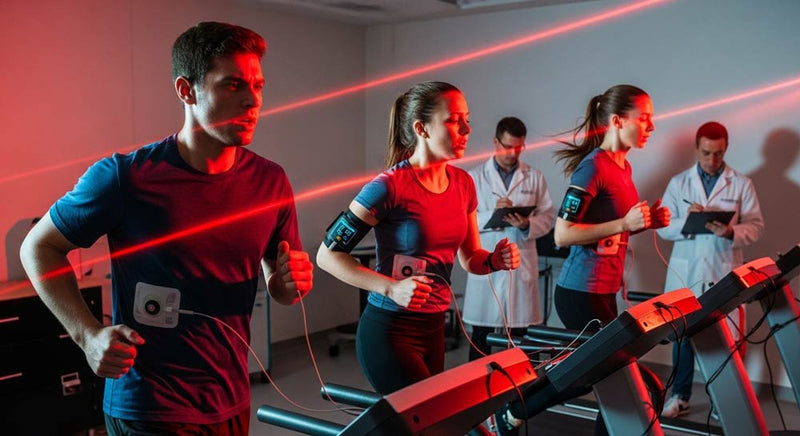
Palm Cooling Extends Endurance in Heat
In treadmill trials at 40°C, palm cooling alone extended exercise duration by about 15% compared to control.
This meant participants were able to keep walking on an incline treadmill for several minutes longer before reaching exhaustion.
The effect showed that cooling the palms slowed the rise in body temperature and delayed fatigue, even in extreme heat
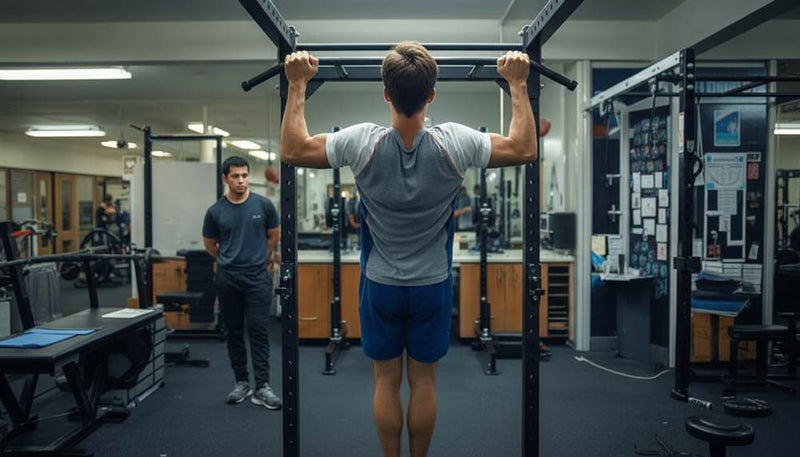
Palm Cooling Increases Training Volume
In resistance training, palm cooling had a major effect on performance.
Over a 10‑week program, participants who cooled their palms between sets completed 40% more work on bench press exercises compared to controls. Pull‑up training volume grew by 144%, showing that cooling allowed athletes to keep performing at higher levels for longer.
Strength also improved, with one‑rep max (1RM) increasing by 22% during the study
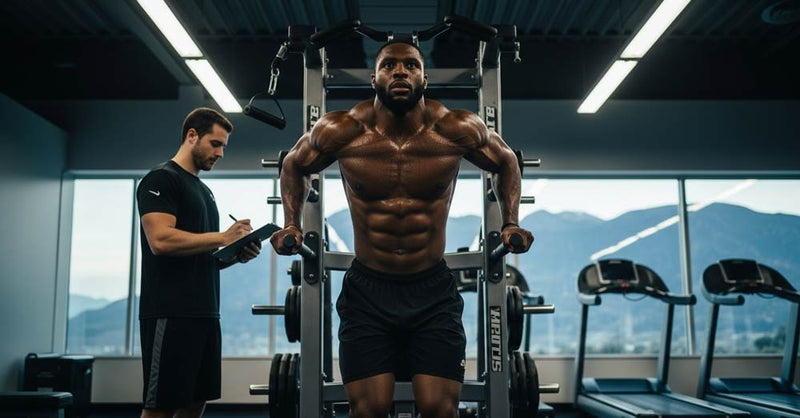
Palm Cooling Boosts Repetition Capacity
A San Francisco 49ers tight end completed 103 total dips across five sets without cooling. With cooling between sets, his total rose to 198 dips in the same session—an increase of 92 dips.
Over four weeks of training with cooling, he progressed further to 310 dips per workout, a total increase of 207 dips from baseline.
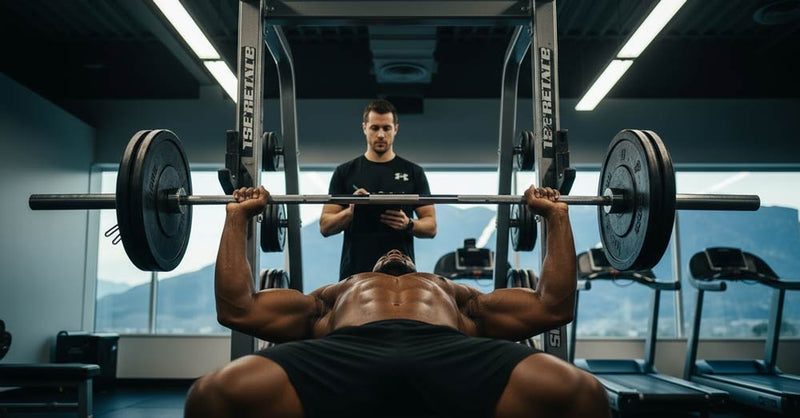
Palm Cooling Improves Strength Progression
A tight end for the Oakland Raiders performed six sets of 225 lb bench presses. His baseline was 51 total reps. After three weeks with cooling, output rose to 60 reps (17.6% improvement).
Over the next four weeks without cooling, gains held steady but did not increase. When cooling resumed for two weeks, performance rose again to 67 reps—a total 31.4% improvement over baseline.
Hot Flash & Chill Relief
Menopause & Hormonal shifts
Menopause brings profound changes to the body’s temperature regulation. This area has been studied in both clinical trials and review articles, with consistent evidence that cooling & warming interventions can provide meaningful relief.
Fluctuating estrogen levels narrow the hypothalamus’ thermal comfort zone, making women more prone to sudden waves of heat and chills. Hot flashes and cold spells are not just uncomfortable—they disrupt sleep, work, and confidence. Palm cooling offers a direct physiological way to draw off excess heat during hot flashes, while palm warming helps reopen blood vessels and restore warmth during sudden chills - stabilizing your body’s temperature from both directions.
Conclusion: Targeted cooling and warming provide fast, discreet relief for menopause’s most disruptive symptoms, improving daily life and sleep quality without medication risks.
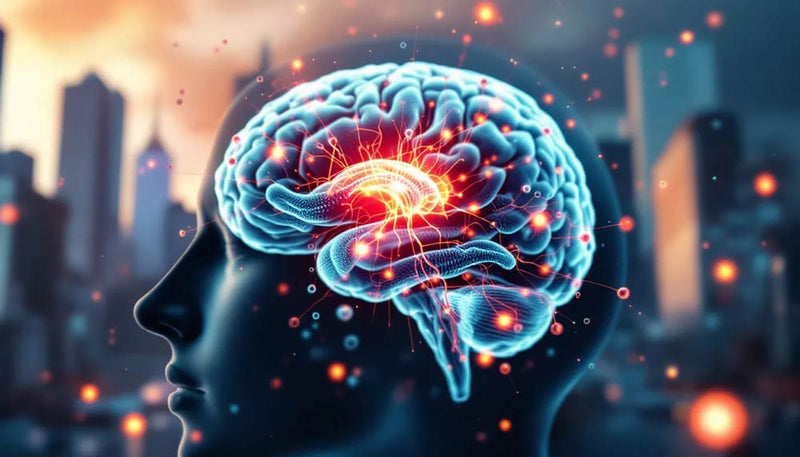
Menopause Narrows the Thermal Comfort Zone
Physiological studies suggest palm cooling works by widening the narrowed “thermoneutral zone” caused by low estrogen, allowing excess heat to offload through the palms.
The hypothalamus, which regulates body temperature, becomes oversensitive in menopause, so even small rises in core temperature can trigger a hot flash.
Research by Freedman and colleagues has shown that postmenopausal women have a much narrower thermoneutral zone, meaning very slight changes in core temperature can set off this hypothalamic response

Palm Cooling Stabilizes the Body’s Thermostat
Laboratory research outside of Freedman’s early studies shows that the hypothalamus acts like a thermostat that can become unstable in menopause, causing sudden bursts of heat release.
Palm cooling removes heat directly from the bloodstream, helping to stabilize this thermostat. As a result, women experience fewer episodes of rapid overheating and the uncomfortable waves of sweating that follow
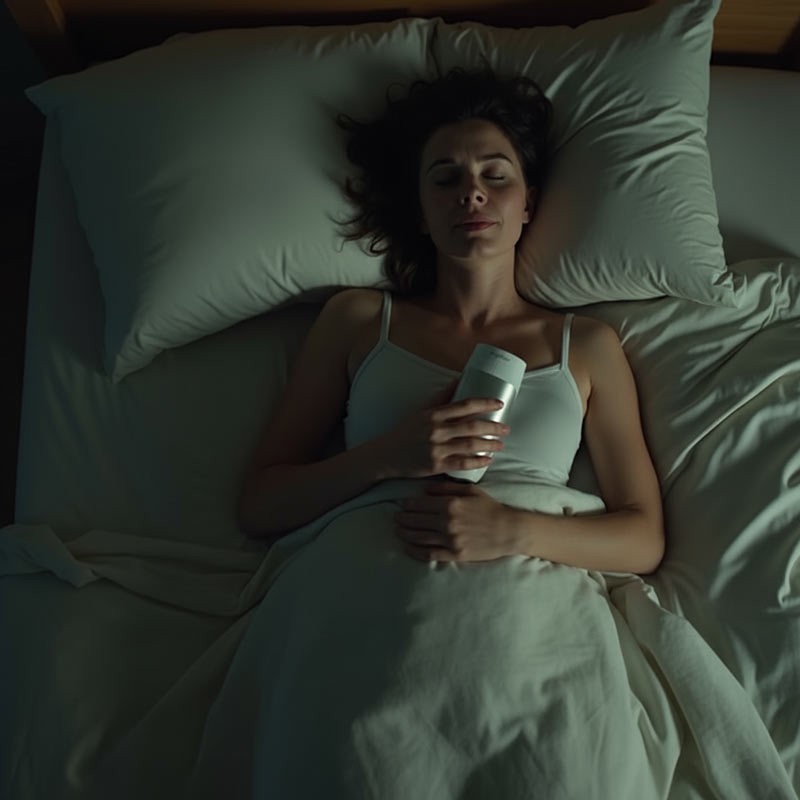
Clinical Trial Confirms Palm Cooling Relief
A 2015 study tested a handheld cooling device (Menopod®) applied to the neck for hot flash relief. Results showed limited effectiveness, highlighting that surface cooling on non AVA rich skin alone doesn’t meaningfully lower core temperature.
Still, it supported the link between reduced core temperature and fewer or milder flashes. Cryo-1 applies this same proven principle but uses palm cooling — the Stanford-validated method that directly cools the blood and rapidly stabilizes core temperature.
In Cryomedics’ own user trials, 100% of women reported noticeable relief, with most feeling cooler within 60 seconds.
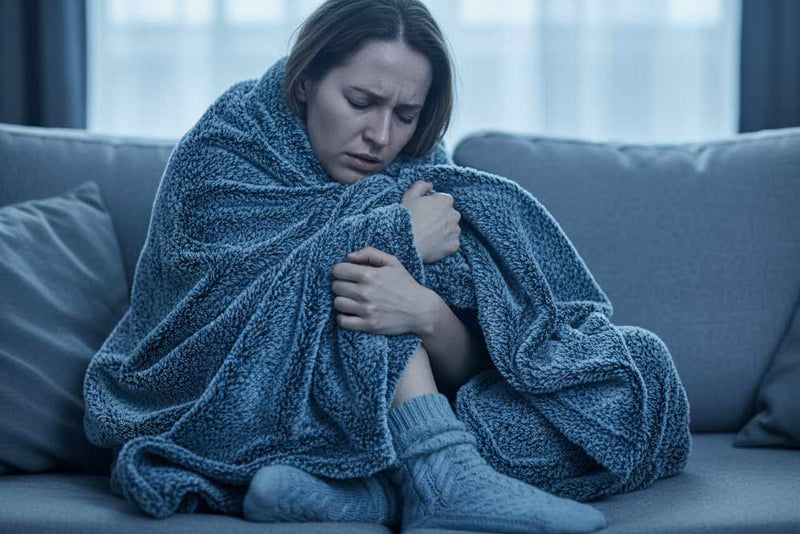
Peripheral Warming Relieves Menopausal Chills
Early human and physiology data show that during menopause, drops in estrogen heighten sensitivity to cold and trigger chills. Though direct trials of warming interventions are still emerging, this review notes that warming peripheral skin - especially areas rich in AVAs (arteriovenous anastomoses) like the palms - can help restore thermal comfort by improving circulation and reducing cold sensations. Many women reported relief from cold sweats and shivering when warming strategies were used.
Heat Stress
& Outdoor Worker Safety Research & Data
Extreme heat challenges not only athletes but also millions of workers, first responders, and people at outdoor events. Research across occupational health and emergency response has shown that palm cooling is an effective way to lower physiological strain in real-world conditions. As body temperature rises, concentration drops, fatigue accelerates, and safety risks climb.
Conventional fixes like fans or ice packs provide surface comfort but do little to lower core heat. Palm cooling addresses this gap by reducing thermal strain from the inside out.
Conclusion: For workers, first responders, and outdoor enthusiasts, palm cooling is a practical safety tool that improves performance, recovery, and resilience in heat.
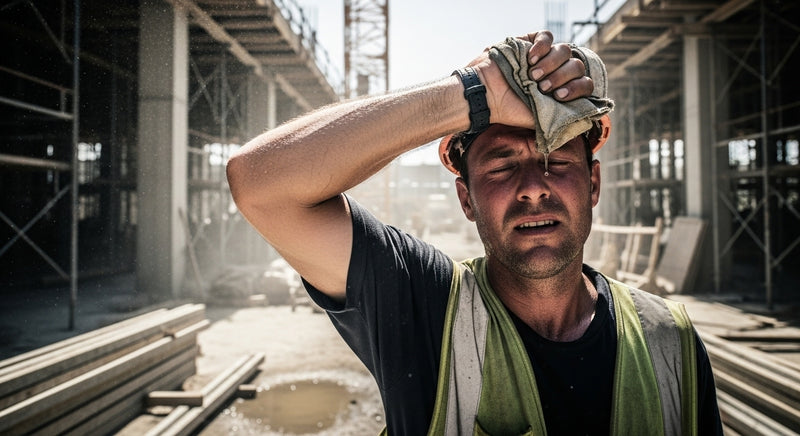
Heat Stress Reduces Worker Productivity
A meta-analysis of over a dozen studies covering ~2,400 construction workers found that when wet-bulb globe temperature rose above 28 °C, about 60% of workers showed reduced productivity due to heat stress.
This means that in hot conditions, most workers slowed down, took more breaks, or were unable to finish their normal workloads. Even modest increases in temperature had clear effects on both safety and economic output.
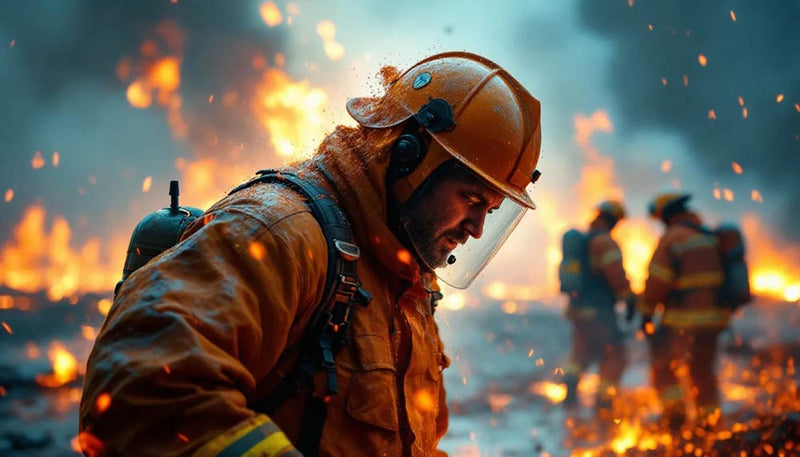
Active Cooling Speeds Firefighter Recovery
Research on live-fire drills shows firefighters’ core temperature and heart rate rise rapidly under heat and exertion.
In these studies, firefighters who used active cooling methods—such as applying cooled water or holding cooled devices during rehab—saw their core temperatures drop faster and their heart rates return to baseline more quickly than those who only rested.
This demonstrates that active cooling can significantly speed recovery compared to passive rest alone

Heat Stress Costs Billions in Lost Work
The International Labour Organization estimates that countries may lose 2–5% of working hours in high-heat sectors by mid-century without better mitigation (ILO). This loss translates into hundreds of billions of dollars in global economic impact, as fewer working hours mean less output and higher costs for businesses.
In the United States alone, heat stress is already estimated to cost employers around $100 billion per year, primarily through lost productivity, absenteeism, and higher healthcare expenses (FAS).
Projections suggest this could double to $200 billion annually by 2030 and climb as high as $500 billion by 2050 without intervention

Outdoor Athletes at Risk of Heat Exhaustion
A recent study of amateur golfers reported a high risk of exertional heat exhaustion in hot and humid conditions, especially with poor hydration and limited rest.
The researchers found that players frequently experienced elevated heart rates, dizziness, and reduced performance when playing in high heat without proper cooling or recovery breaks.
By slowing the rise of core temperature and easing cardiovascular strain, palm cooling may help golfers, pickleball players, and other outdoor athletes avoid hitting these dangerous thresholds.
Anxiety
Vagus Nerve Cooling, & Heart Rate Regulation
Anxiety is more than a mental state—it is a full-body surge of sympathetic activation. Studies in physiology and clinical psychology have demonstrated that targeted cooling of the palms and neck can influence vagal tone and cardiovascular response, offering a physiological pathway to relief. The heart races, breathing shortens, and many people feel overheated.
By cooling the palms, the body sheds heat and reduces sympathetic load. When paired with gentle cooling along the lateral neck, vagus nerve pathways are stimulated, which helps slow heart rate and promote calm.
Conclusion: Combining palm and vagus nerve cooling offers a simple, drug-free way to interrupt anxiety cascades and bring the body back into balance.
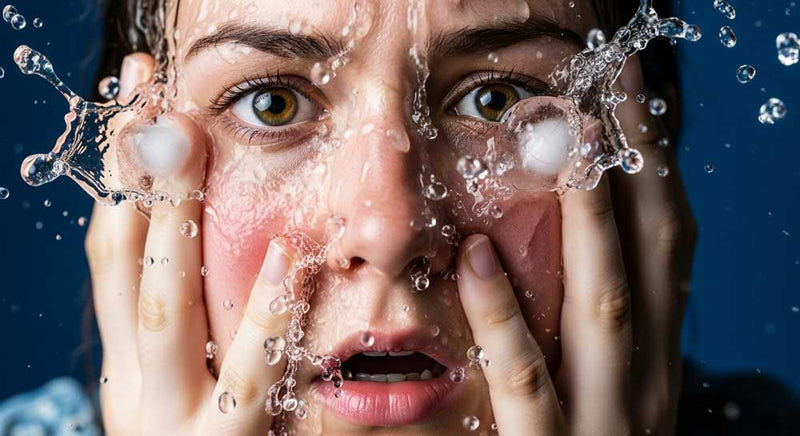
Cold Immersion Reduces Panic Symptoms
A 2021 clinical study examined patients with panic disorder undergoing short cold facial immersion.
The cold exposure activated the diving reflex, which produced a marked drop in heart rate and increased parasympathetic activity compared to baseline.
Participants reported reduced panic symptoms during the intervention, showing that targeted cooling can directly calm the cardiovascular system and ease anxiety responses.

Neck Cooling Lowers Heart Rate and Boosts HRV
A randomized trial with 61 healthy participants tested cold stimulation on the lateral neck, cheek, and forearm.
Cooling applied to the lateral neck for 16‑second intervals significantly increased heart rate variability and lowered heart rate compared to baseline.
This shows that targeted cooling in this area can directly activate the parasympathetic nervous system
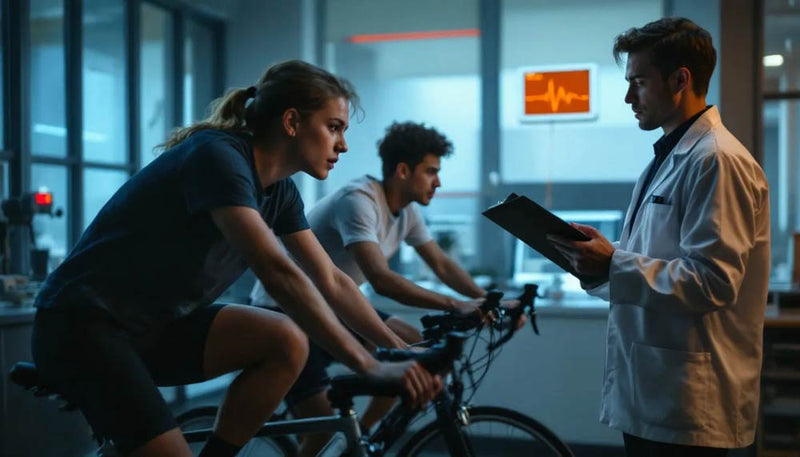
Cooling Aids Recovery After Intense Exercise
A study of adolescent cyclists tested neck cooling at different temperatures during high‑intensity training.
Cooling reduced perceived heat, lowered ear temperature, decreased heart rate during recovery, and reduced stress markers in the blood.
This suggests cooling the neck helps the body recover faster from cardio and systemically induced stress.

Extended Neck Cooling Slows Heart Rate
A 2020 study tested 11 healthy adults with 90 minutes of localized neck cooling.
Neck skin temperature dropped by about 9 °C, and participants’ heart rates slowed significantly during the cooling period.
This shows that neck cooling can directly reduce cardiovascular strain by activating the body’s natural reflexes for conserving energy
Frequently Asked Questions
What does the science say about palm cooling?
Stanford-led research shows palm cooling can increase training volume by up to 144%, extend endurance in heat by 43%, and shorten hot flashes from 10 minutes to under 60 seconds.
Is palm cooling safe?
Yes. When used within the 12–16 °C range, palm cooling is safe and comfortable.
Does cooling the vagus nerve help with anxiety?
Yes, cooling the vagus region stimulates the parasympathetic nervous system, helping the body return to a calm state.
Why use both cooling and warming?
Alternating between them restores temperature balance and circulation for faster recovery.
Who can use palm cooling?
Anyone can use palm cooling to their benefit. Athletes, menopausal women, outdoor workers, and individuals managing heat or anxiety are among the beneficiaries.
Cryomedics Solutions
Science you can hold
Cryo turns decades of research on palm and vagus nerve cooling & warming into a simple handheld device. Backed by clinical and athletic trials, it helps improve performance, reduce hot flashes, reverse chills, ease anxiety, and fight heat stress. Explore the products below and see how cooling science fits your life.
References
- Grahn DA, Cao VH, Heller HC. J Appl Physiol. 2005. PubMed
- Grahn DA, Cao VH, Nguyen CM, Liu MT, Heller HC. J Strength Cond Res. 2012. PubMed
- Reid RL et al. Randomized clinical trial of handheld cooling device. Climacteric. 2015. PubMed
- Heller HC, Grahn DA. Stanford Research Reports, 2012–2017. Researchgate
- Freedman RR. Physiology of hot flashes. Am J Hum Biol. 2001. PubMed
- Freedman RR. Menopausal hot flashes: mechanisms, endocrinology, treatment. Thieme. 2005. Thieme
- Koehn J et al. Neck cooling induces blood pressure increase and peripheral vasoconstriction in healthy persons. Auton Neurosci. 2020. PubMed
- Venugopal V et al. Heat stress and its impact on productivity of workers: a meta-analysis. Int J Environ Res Public Health. 2022. PMC
- Hostler D et al. Firefighter rehabilitation with active cooling during live-fire training. Prehosp Emerg Care. 2013. PubMed
- Brearley M et al. Exertional heat illness in golfers: risk factors and prevention. J Sports Sci. 2025. Taylor & Francis
- International Labour Organization. Working on a warmer planet: The impact of heat stress on labour productivity. ILO Report. 2019. ILO
- Center for American Progress. Extreme heat is more dangerous for workers every year. 2019. American Progress
- Federation of American Scientists. Impacts of extreme heat on labor productivity. 2021. FAS
- Müller T et al. Brief cold stimulation of the neck region increases HRV and reduces heart rate. Front Physiol.2019. PubMed
- Azevedo TM et al. Cold facial immersion reduces panic symptoms via diving reflex in panic disorder patients. Front Psychol. 2021. PubMed
- Lee JY et al. Neck cooling during high-intensity exercise reduces heat strain and stress markers in adolescent athletes. Life (Basel). 2023. MDPI
- Effects of menopause on temperature regulation. Temperature V12 2025

